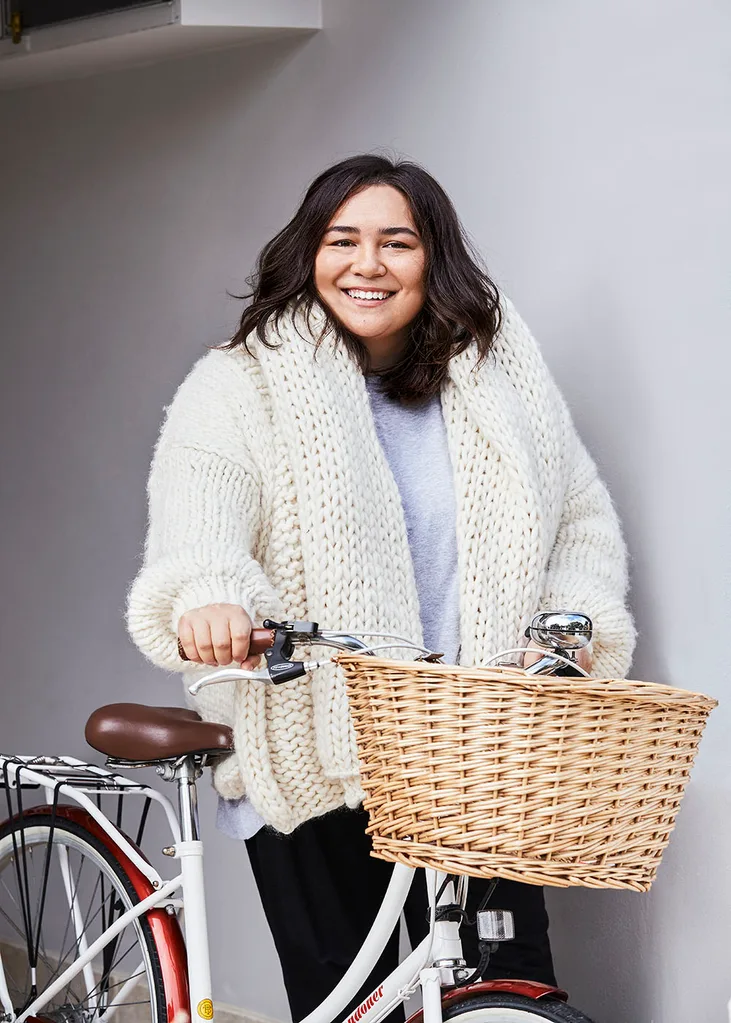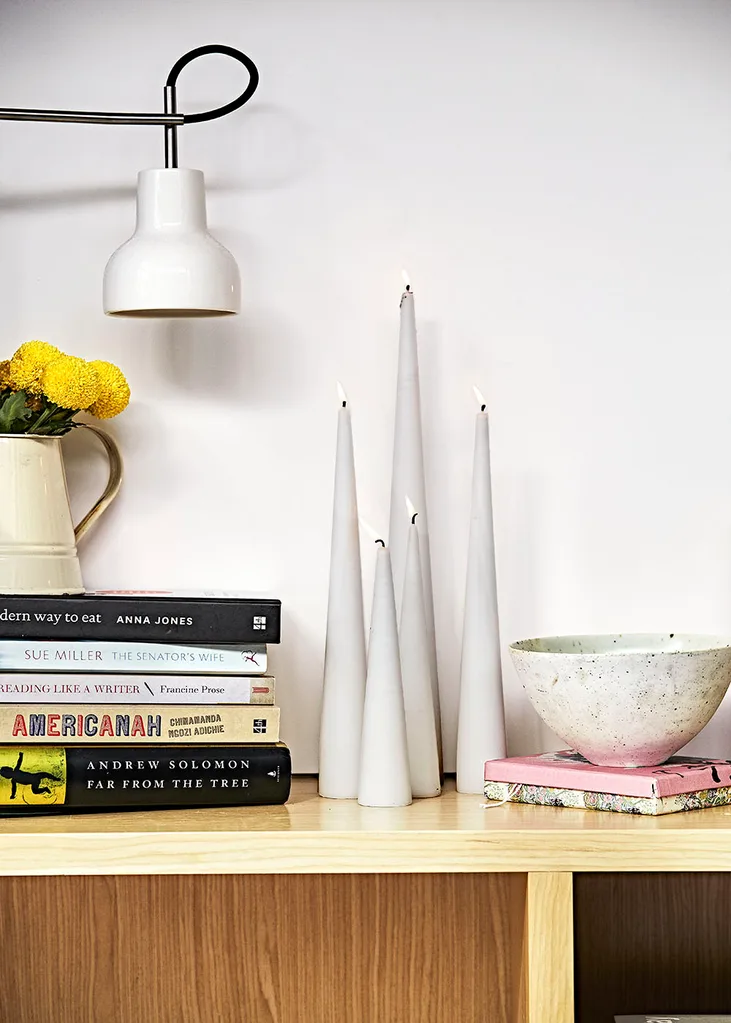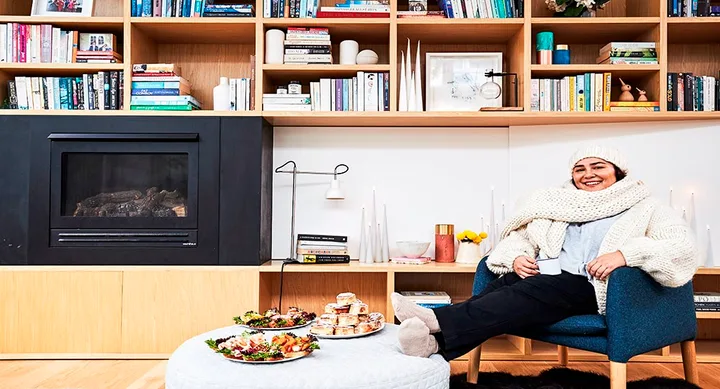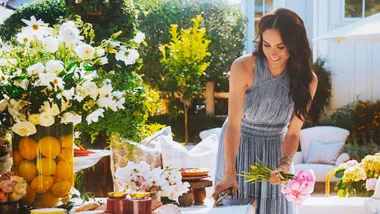Hygge. Like much of Danish, the word doesn’t sound anything like it looks. Say Hugh. Pronounce a strong G at the end (as in Grant, without the, er, rant). There, you’ve got it. Hygge. The most important word in the Danish language.
I first heard that distinct, guttural sound on a cobblestone backstreet in Copenhagen, wrapped up in a scarf the size of a small child and drinking hot chocolate. (All things that are very hygge, although I didn’t know it at the time.) I was on a free walking tour of the Danish capital because I was at the tail end of a Scandinavian holiday that had rendered me stark raving skint.
There was an expat Brit leading the tour and in whispered tones – this wasn’t his first rodeo – he gathered us tourists in close. “Do you want to know the secret to Danish happiness?” he asked. “Hygge.”“Bless you,” someone said, sotto voce. The guide ploughed on. He explained that hygge was about sitting by an open fire having a glass of wine, drinking coffee in bed, watching TV snuggled up on the couch. It’s a philosophy, a life-style: an ode to cosiness and pleasure. It’s about taking time every single day to experience something that makes you happy. “And it’s why I moved here five years ago,” our guide said with a wink.

Hygge is also the biggest trend in the world of self-improvement, one that’s about to take over your bookshelf. They’re calling it the “scand-wagon”, with five hygge-centric guides-to-life slated for release in the coming months. So why all this sudden interest?
“A lot of lifestyle philosophies are rooted in that we’re not good enough as we are,” explains Charlotte Abrahams, author of the design-centric Hygge (Orion, $32.99). “Hygge is the opposite. It doesn’t have any rules. It’s generous-spirited. And you can eat cake!”
Hygge might not have any rules, but there is a set of guidelines that you need to follow. I turn to Meik Wiking, CEO of the Danish Happiness Research Institute and author of the forthcoming The Little Book Of Hygge (Penguin, $24.99). “Hygge is about trying to build little moments of joy and happiness into your life,” Wiking tells me. “It’s the pursuit of everyday happiness.”
For years, Wiking has been trying to work out why Denmark tops the World Happiness Index. He thinks that it may be hygge, a concept that is an integral part of the Danish cultural DNA. Danes don’t have the monopoly on eating cake, snuggling by the fire and perennially wearing natural fibres. But they do have the monopoly on the singular cultural obsession with which they pursue that feeling of cosiness. “What hygge does is create a language of pleasure that shapes our behaviours and makes us more focused on experiencing everyday happiness,” he explains.
I start my week of living Danishly with an easy update: mood lighting. A hygge home is warm and inviting and one easy way to achieve that is candlelight. “No candles, no hygge,” as Wiking puts it. Wiking tells me that he even has candles burning at all times in his office, a suggestion that is politely, but firmly shut down by my work’s HR manager. I resort to filling my flat with candlelight that evening. Unfortunately, the only candles at home are scented and the combination of their aromas is suffocating. Still, I soldier on and hit the main light switch, preparing to get cosy. I immediately stub my toe. It’s very dark, like, primordial dark. I slump onto the sofa in a huff. I have to strain my eyes to see the pages of my book; I give up and head to bed for a fruitless hour on The Internet.

The next morning I hit snooze on my alarm seven times. I had grand plans of cooking breakfast – boiled eggs, very Danish – and eating them in my courtyard, not standing up at my kitchen counter, checking emails on my phone. This is Abrahams’s favourite hygge thing to do, but all the snoozing has made me very late for work, and I grab vegemite toast and a sad-looking cup of coffee from the office cafeteria. Badly done, indeed.
“Food is the very centre of hygge,” Jesper Hansen, the Danish founder of Sydney’s Blond Catering, tells me. “Danes spend hours on home-cooked meals and also dressing the table to get the right mood.” So I ask Hansen and his head chef, Magnus, whether shovelling a carton of Thai takeaway into my mouth while watching, say, James Norton’s shirtless scene in Grantchester on repeat, is hygge? Magnus pauses for what is an almost comical length of time. “Maybe if you put the Thai on a nice plate and arrange coriander on top,” he ventures at last, with an unconvinced look on his face. OK, takeaway is out.
Hansen suggests creating dishes like frikadeller (Danish meatballs), smørrebrød (open rye bread with intricate toppings), and curried herrings. I’m not convinced about the fish, but I can get down with the smørrebrød. I decide to make some for my friends who are bringing their newborn baby to my place for Sunday brunch. Danes love socialising. Almost 80 per cent of them catch up with friends once a week; and you get extra points for hosting them at home. I’m looking forward to this catch-up, which has the makings of a super hygge event: food, friends and baby cuddles.
Plot twist: Smørrebrød is the haute couture of Danish cuisine! You have to obscure all traces of the rye bread with artfully fanned out pieces of avocado, wafer thin slices of cured fish (what else?) and tiny little floral arrangements of herbs. They are ridiculously finicky, and every time I think I’ve got one looking perfect, the entire thing slides to one side. By the time my friends arrive, I’m not feeling at all warm and cosy.

A note: when they say that hygge means cosy, they not only mean that nice warm fuzzy feeling you get when you do something for yourself, they also mean literally cosy. It’s all about the oversized cardigans, the scarves and beanies and the hygge-
bukser (comfy pants). In the spirit of this story, I spend most of the week in a rotating roster of knits and an oversized turtleneck midi dress, even when the weather soars to a warm mid-20s winter high.
Fortuitously, I’ve chosen that day for my hygge-sanctioned early mark. Danes work an average of six and a half hours a day, clocking off at 3.30pm. Leaving work early isn’t aboutskiving off, but rather about ensuring Danes work to live, and not the other way around. Because days are so short in winter, the 3pm finishes allow Danes to catch up with friends or spend time outdoors with their kids.
Another thing the Danes do tomake the working week more palatable is eat cake. Lots of cake. Getting hygge at work is simply a matter of downing tools in the afternoon for a cinnamon scroll and a cup of coffee, says Wiking, and – here’s the important bit – not feeling guilty about it. So before I stride purposefully out of the office at half past three, I eat a delicious sticky bun. And then I have half of another one.

By the time I start cycling in Sydney’s Centennial Park it’s golden hour, and the sunshine is sparkling. Truly, it’s a pleasant feeling: cycling as the light bounces off thetrees, not being in the office on a Friday afternoon. When I get home I pull on my hygge-
bukser and make a slow, delicious dinner, which I eat curled up on the couch. This is what Wiking tells me is Friday-specific hygge, unwinding after a long week. I don’t recall feeling so happy without the use of legal substances (red wine).
The rest of the weekend passes in a blissful blur. I read books – plural! – and take long baths. By the time Sunday comes, I’m in the hygge zone. There’s a special kind of Sunday hygge, which essentially involves staying in bed all day. I snuggle, I nap.
When I wake up on Monday, I only snooze my alarm once. Instead of grabbing lunch on the go, I prepare a pared-back version of smørrebrød. And while I don’t quite leave the office at 3.30pm, I am out of there less than two hours later, a personal best for me.
“Australia has good growing conditions for hygge” – Danish Happiness Research Institute
Reader, I felt good. On a scale of the contented blushing emoji to derangedly jumping on Oprah’s couch, I’m sitting firmly at a Leonardo DiCaprio, the day he got his Oscar nomination.
Wiking believes that “over time experiencing a lot of positive emotions everyday can contribute to higher levels of life satisfaction”. But living hygge isn’t for the faint-hearted. The hours you’re expected to put into making yourself happy can be exhausting. Sometimes you don’t want to prepare elaborate meals. Sometimes a girl just wants a whole pizza delivered by an obliging man on a Foodora bicycle. But the hygge benefits are too pressing to be ignored. When I tell Wiking about how happy I am he’s delighted. “I think Australia has good growing conditions for hygge,” he muses. He points out that socialising over shared meals is already part of our culture – the humble Australian barbecue might constitute its own hybrid form of hygge.
Hansen agrees but adds, “To make it more hygge, I’d add candles!” Of course. That night, I feel incredibly self-satisfied. I book flights to Copenhagen for a holiday next month. Only this time, I know all the secrets.










